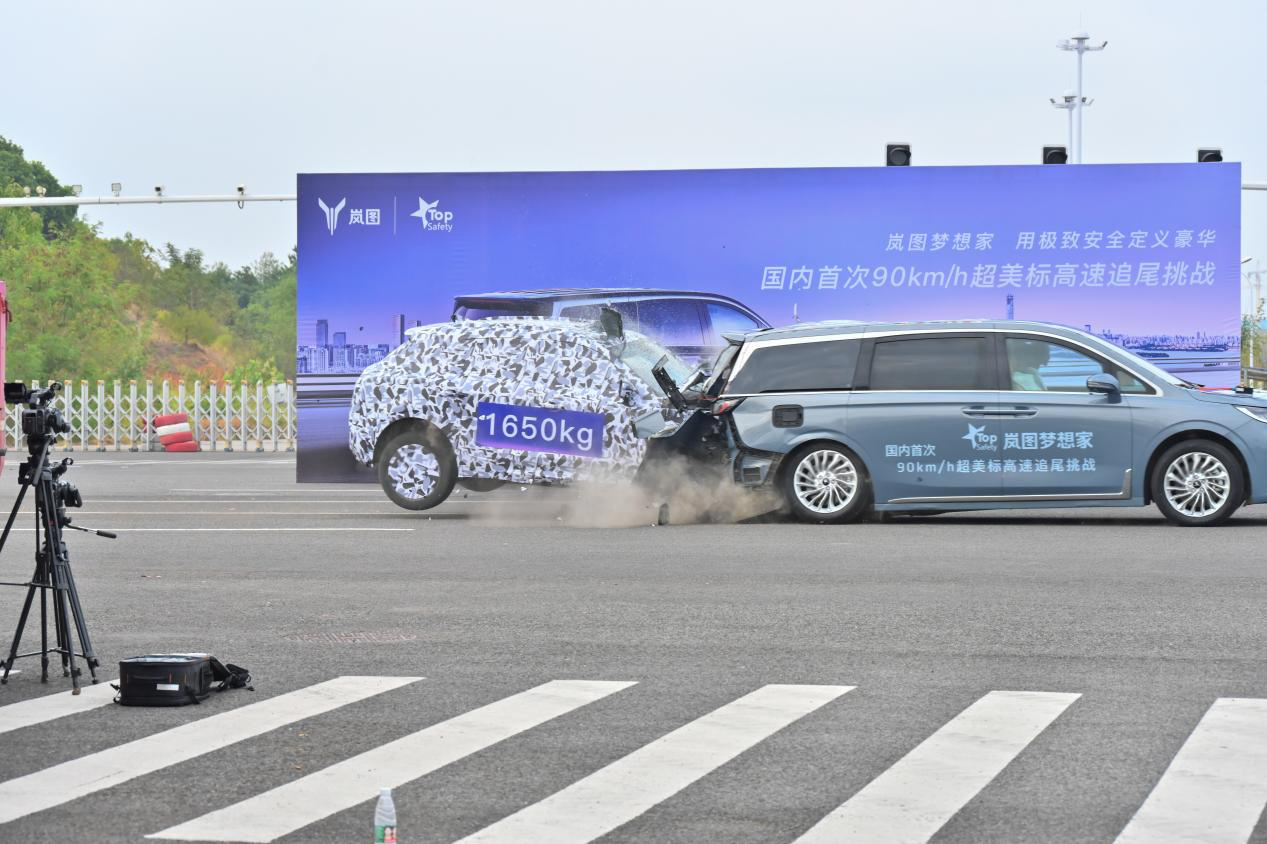On October 8th, Voyah Dreamer successfully completed China’s first 90 km/h super-US-standard rear-end test and complex scenario intelligent AEB + ESA test in Changsha, and both tests were successfully challenged.
According to public data, rear-end accidents account for about 11% of the accident forms that cause passenger injury and death in China. This number cannot be ignored because it hides the safety hazards of passengers, especially rear-seat passengers. However, at present, there are few testing specifications for rear-end collisions of vehicles in various countries around the world.
Nowadays, many families in China have entered the era of multiple children, and domestic electric MPVs have gradually become the first choice for large families. More and more 7-seat MPV models are emphasizing spacious third-row space and comfortable seats, which often leads many consumers to ignore the safety of third-row passengers, especially when being rear-ended by a car from behind.
High-speed Rear-end Test Scores Surpass American Standards
Currently, the methods to improve vehicle safety in the world mostly use simulated real-world conditions for safety collision experiments, including setting frontal offset collisions, side collisions, and rear-end collision tests in various new car safety collisions. The crash safety of a car can be understood to some extent as the last safety guarantee for passengers in the car.
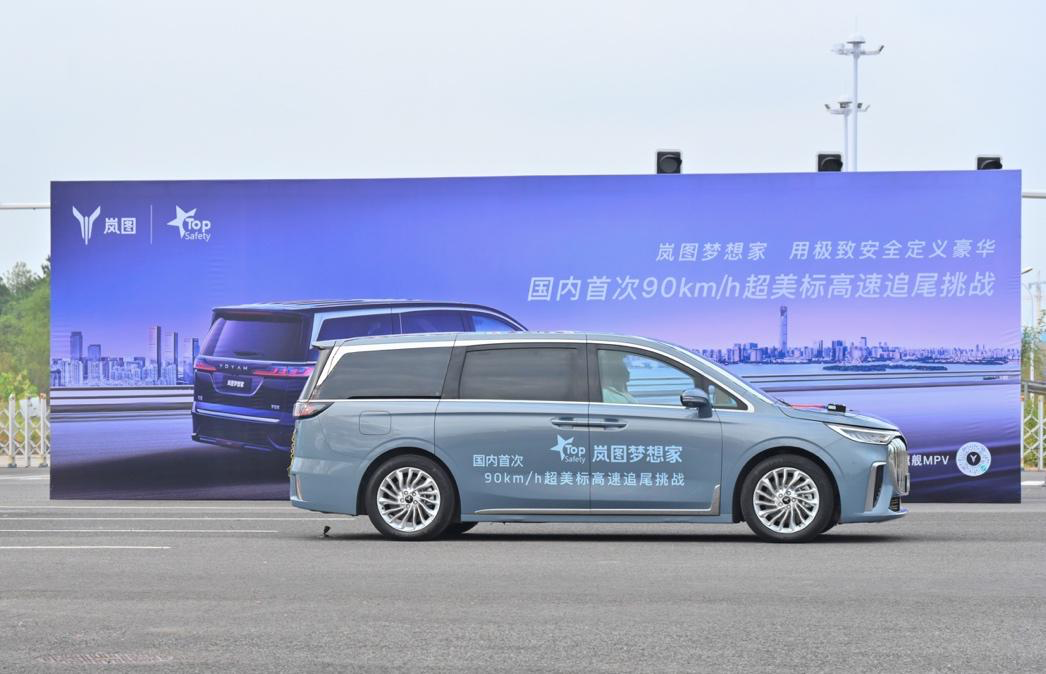
This Voyah Dreamer rear-end test project provides comprehensive and objective safety testing data to simulate the real collision process of road rear-end accidents. Whether it is the collision speed, bullet car weight, or dummy configuration during the collision, it exceeds the highest standards of the same testing conditions in the United States:
-
Bullet car speed exceeds US standards: the collision speed of the current US standard for rear-end testing is 80 km/h, and the actual challenge speed of Voyah Dreamer is as high as 100 km/h, which is 25% faster than the US standard;
-
Bullet car collision energy exceeds US standards: This test project is the first real rear-end collision in China, and it is also the largest collision energy of the actual car rear-end collision in history. The bullet car used in the test was switched from a trailer to a real SUV, with a weight of 1,650 kg, which is nearly 21% heavier than the trailer, and the actual rear-end kinetic energy is about 1.88 times that of the US standard;
-
Bullet car hardness exceeds US standards: The US standard trailer head is equipped with a energy-absorbing device, but the actual bullet car used for the challenge is a real car;
-
Testing conditions exceed US standards: The conditions and related standards inside the laboratory are controllable, while uncontrollable conditions such as outdoor bullet cars also affect the final results of the test.
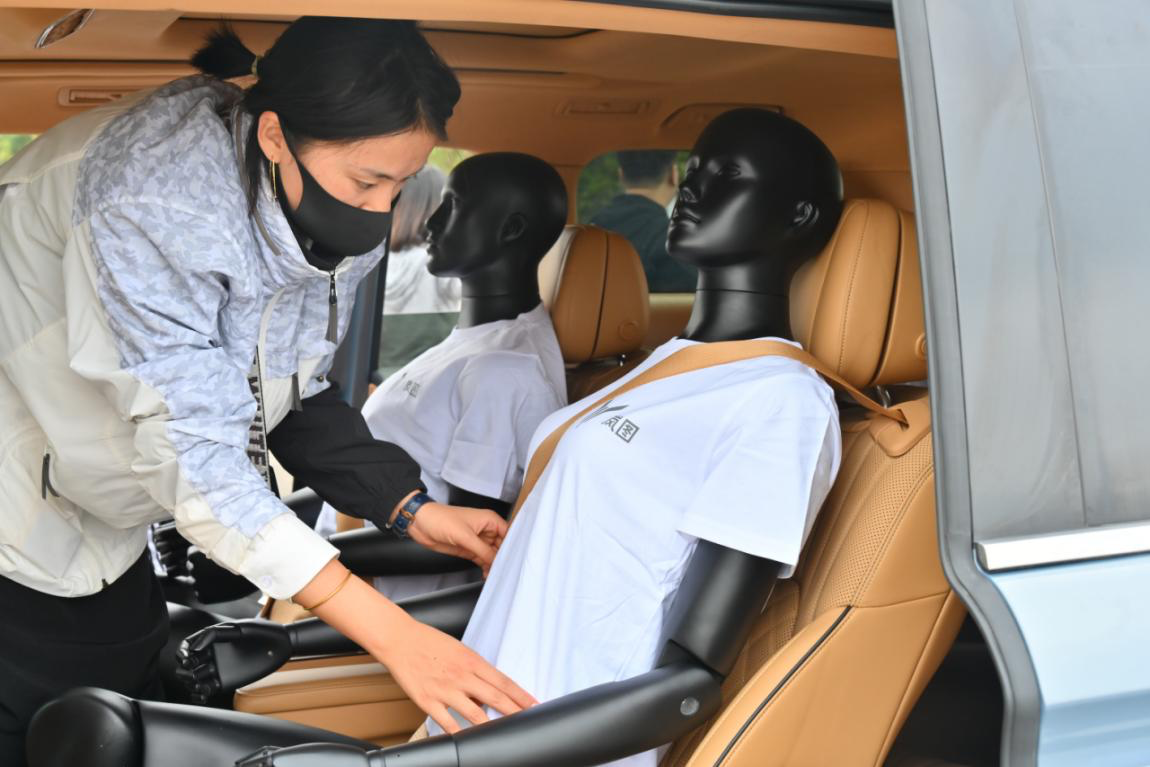
Finally, Voyah Dreamer successfully completed the super-US-standard high-speed rear-end test with an actual speed exceeding 100 km/h, and the challenge results are as follows: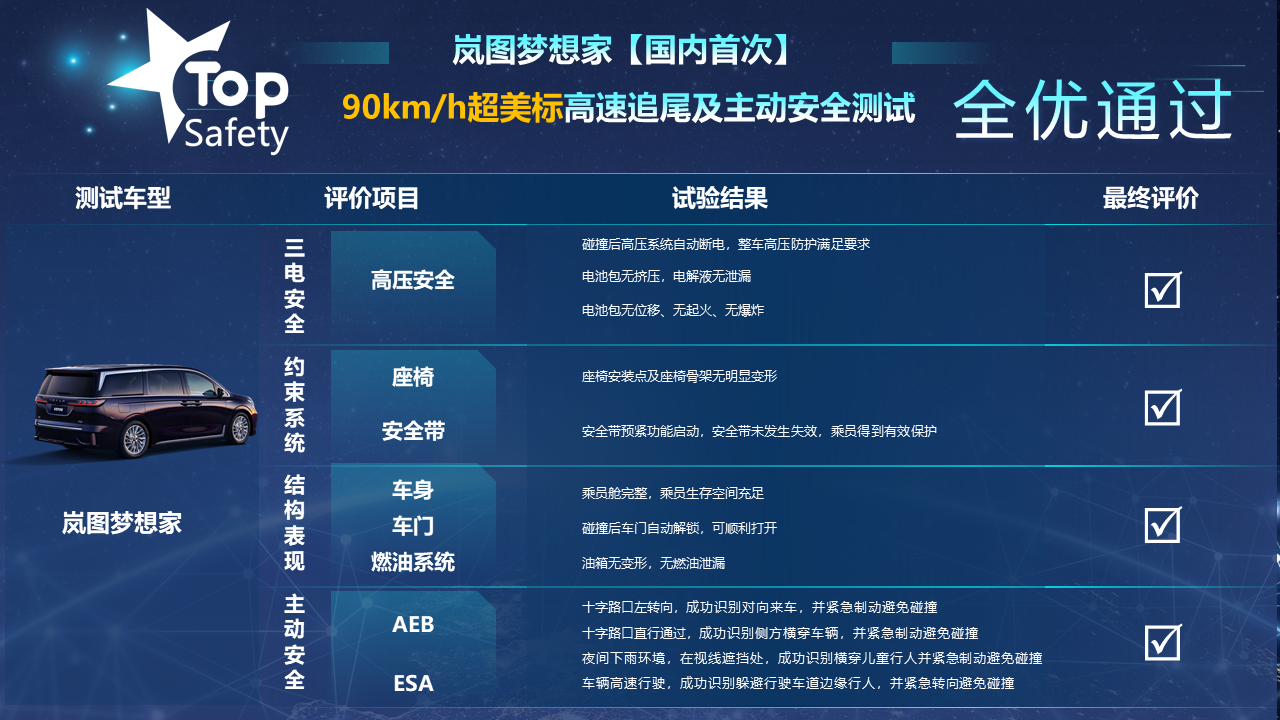
-
Three-electric safety: The high-voltage system automatically disconnects, and the battery pack has no displacement, no ignition, and no explosion. The electrolyte does not leak.
-
Passenger safety: The seat installation points and seat frames have no obvious deformation, the seat belts have pre-tightening function, and the seat belts have not failed, effectively protecting the passengers.
-
Structural safety: The passenger compartment remains intact after the collision, the passenger survival space is sufficient, the car doors automatically unlock and can be opened smoothly after the collision, and there is no deformation or fuel leakage of the fuel tank.
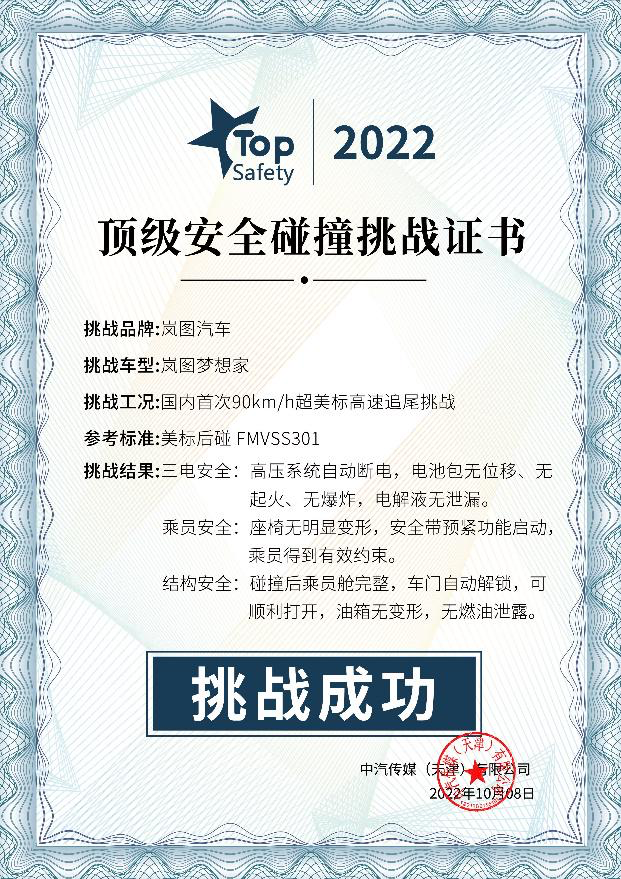
Under the most rigorous global collision standards with 1.88 times the collision energy, the Voyah Dreamer’s body did not experience serious deformation, and passenger safety was effectively protected in all three rows. The Dreamer’s body structure is designed with multiple loops of high-strength transmission paths for all working conditions, laser welding and heat forming after the longitudinal beams, high-strength cage cockpit frames, and 23.6% of the white body is made of hot-formed steel, and high-strength steel accounts for more than 70%.
At the same time, the heat-formed longitudinal beams and the ultra-high-strength third-row seat crossbeams form a body deformation cutoff zone with the upper body, creating a high-strength cage body, which provides excellent survival space for 2nd and 3rd row passengers in the event of a rear-end collision.
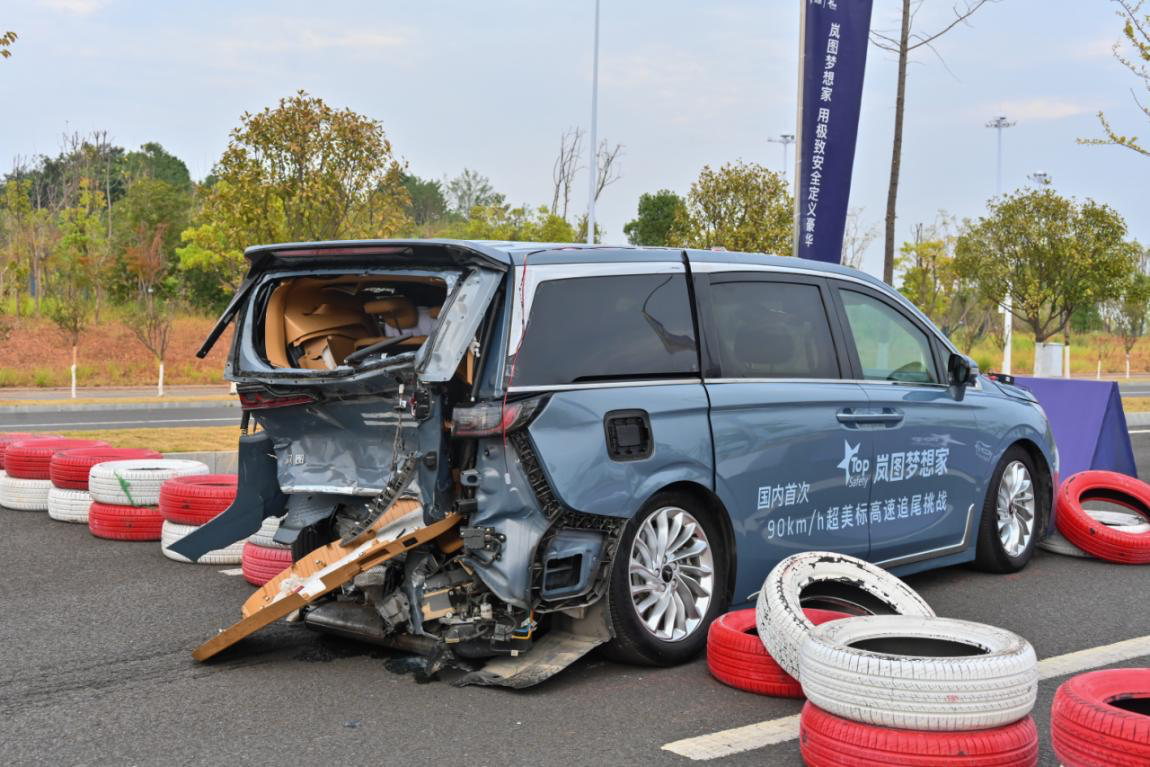
Ultra-high-strength anti-collision beams can instantly absorb energy generated after collision, reduce damage to vehicle parts other than the tail, and the energy-absorbing box can fully collapse and absorb energy, ensuring that other load-bearing components do not deform, reducing vehicle repairability. The two-stage broken energy-absorbing design of the all-aluminum alloy rear subframe can release space and participate in energy absorption. At the same time, the vehicle can quickly disconnect the high-voltage system within 18 milliseconds after the collision to ensure passenger and battery safety. The doors also automatically unlock after the collision, allowing passengers to evacuate to a safe area.
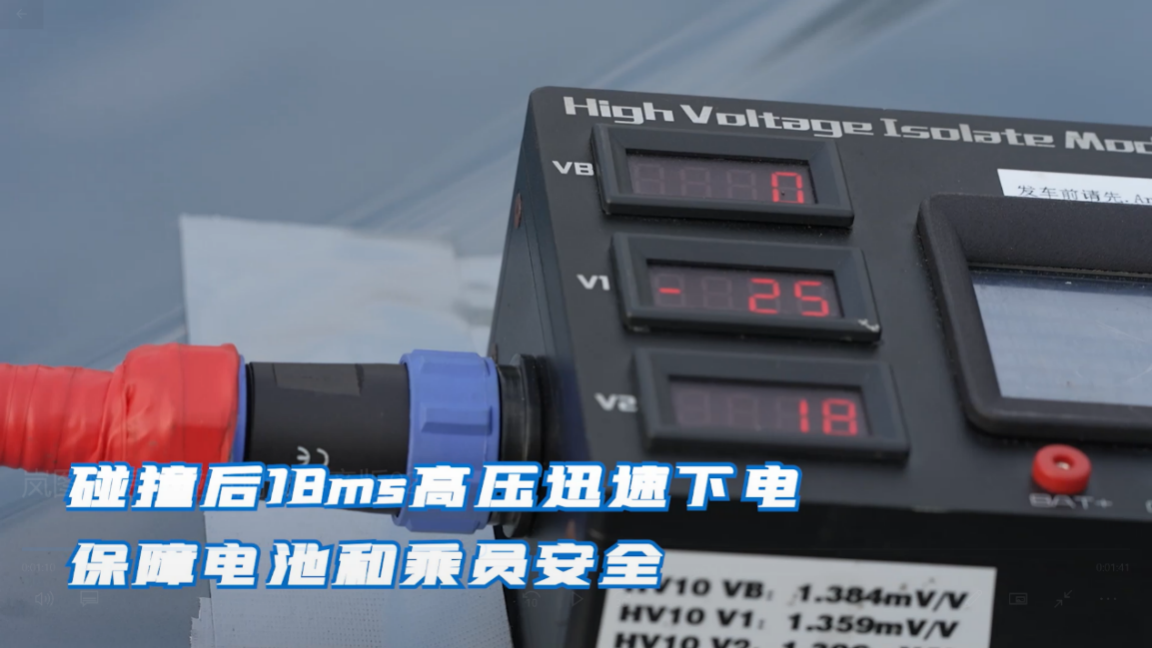
Eliminate Secondary Injuries
After the rear-end collision test, the airbags of Voyah Dreamer did not explode, which can reduce maintenance costs. Moreover, if a secondary collision occurs, the unexploded airbags can provide secondary protection for the occupants.
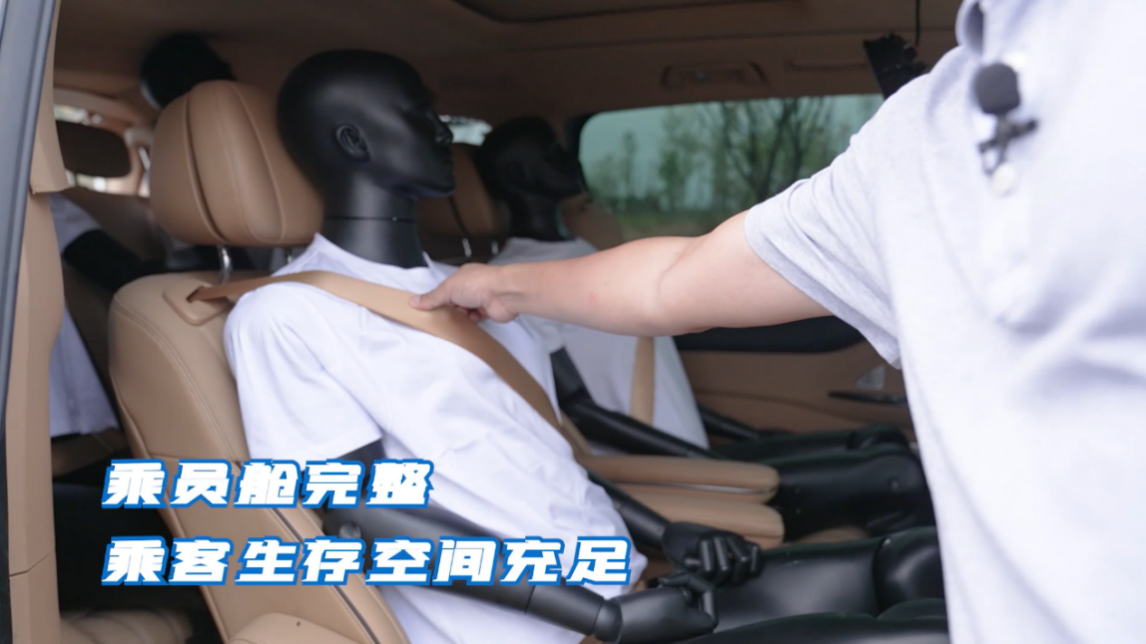
According to the deformation state of the dummy model inside the car after the rear-end collision test and the seat belt test, all seat belts were pretensioned and none failed after the collision. The dummy model did not exceed the passenger compartment and was effectively restrained.After the rear-end collision, all doors of the Voyah Dreamer can be opened smoothly, the hazard warning lights are activated normally, and there is no oil leakage trace on the chassis, while ensuring the prevention of damage to the passenger compartment. The emergency call system inside the car is activated and working properly, which can give precious time for accident rescue. At the same time, active safety technologies such as Automatic Emergency Braking (AEB) can prevent secondary accidents from happening from the source.
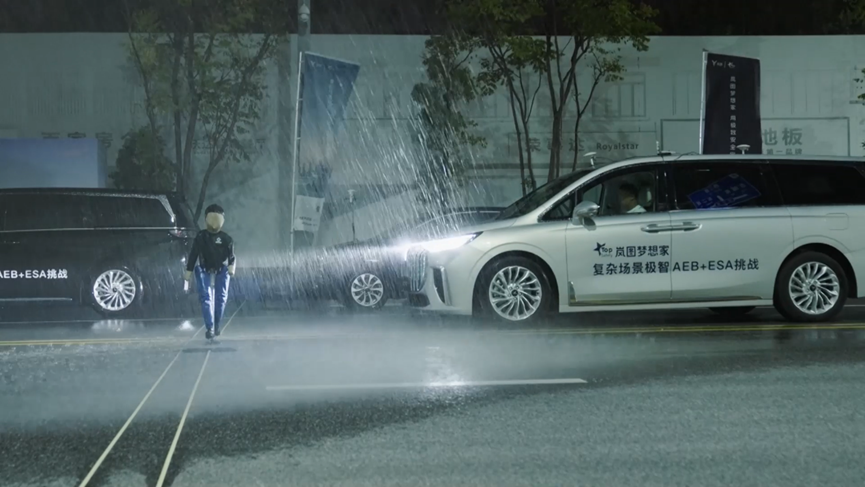
During the rear-end test, the power battery equipped in the Voyah Dreamer underwent 50 g acceleration simulated collision tests and 200 kN compression tests, but there was no smoke, fire, or explosion after the test. The 200 kN compression force is equivalent to the sum of the weights of two buses, which is about 20 tons. The safety performance of the battery protection system of the Voyah Dreamer has been verified.
This article is a translation by ChatGPT of a Chinese report from 42HOW. If you have any questions about it, please email bd@42how.com.
